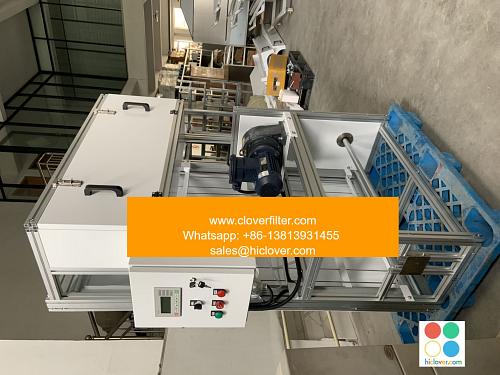The Science Behind Air Filter Ecosystems: A Deep Dive

Air filter ecosystems are complex systems that play a crucial role in maintaining indoor air quality, and their importance cannot be overstated. In this article, we will delve into the science behind air filter ecosystems, exploring the various air filtration technologies, air quality monitoring systems, and indoor air pollution control methods that are used to create a healthy and sustainable indoor environment.
Introduction to Air Filter Ecosystems
An air filter ecosystem is a network of air filtration systems, air purifiers, and ventilation systems that work together to remove indoor air pollutants, such as particulate matter, gases, and volatile organic compounds (VOCs), from the air. These systems are designed to create a healthy indoor environment by maintaining optimal indoor air quality and preventing the spread of airborne diseases.
The Science Behind Air Filtration
Air filtration is the process of removing airborne contaminants from the air using air filters or air purifiers. There are several types of air filtration technologies available, including mechanical filtration, electrostatic filtration, and activated carbon filtration. Each of these technologies has its own strengths and weaknesses, and the choice of technology depends on the specific air quality application and the type of indoor air pollutants present.
Application Areas of Air Filter Ecosystems
Air filter ecosystems have a wide range of application areas, including:
- Residential buildings: Air filter ecosystems are used to maintain indoor air quality and prevent the spread of airborne diseases in homes and apartments.
- Commercial buildings: Air filter ecosystems are used to maintain indoor air quality and improve occupant health and productivity in offices, schools, and other commercial buildings.
- Industrial facilities: Air filter ecosystems are used to remove hazardous air pollutants and maintain process control in industrial facilities, such as manufacturing plants and laboratories.
- Healthcare facilities: Air filter ecosystems are used to maintain sterile environments and prevent the spread of airborne diseases in hospitals, clinics, and other healthcare facilities.
Key Components of Air Filter Ecosystems
A typical air filter ecosystem consists of several key components, including:
- Air filters: These are the primary components of an air filter ecosystem, and are responsible for removing airborne contaminants from the air.
- Air purifiers: These are devices that use air filtration technologies to remove indoor air pollutants from the air.
- Ventilation systems: These are systems that provide fresh air to a building or room, and remove stale air and indoor air pollutants.
- Air quality monitoring systems: These are systems that monitor indoor air quality and detect indoor air pollutants in real-time.
- Improved indoor air quality: Air filter ecosystems can remove indoor air pollutants and maintain optimal indoor air quality.
- Prevention of airborne diseases: Air filter ecosystems can prevent the spread of airborne diseases by removing pathogens and other hazardous air pollutants from the air.
- Increased occupant health and productivity: Air filter ecosystems can improve occupant health and productivity by maintaining a healthy indoor environment.
- Reduced energy consumption: Air filter ecosystems can reduce energy consumption by minimizing the need for heating and cooling systems.
Benefits of Air Filter Ecosystems
Air filter ecosystems offer several benefits, including:
Conclusion
In conclusion, air filter ecosystems are complex systems that play a crucial role in maintaining indoor air quality and preventing the spread of airborne diseases. By understanding the science behind air filter ecosystems and the various air filtration technologies and air quality monitoring systems that are available, we can create healthy and sustainable indoor environments that promote occupant health and productivity. Whether you are looking to improve indoor air quality in your home, office, or industrial facility, an air filter ecosystem is an effective solution that can provide numerous benefits and improve overall well-being. You haven’t provided a question or topic for me to respond to. Please provide more context or information so I can assist you. What would you like to talk about or ask?

